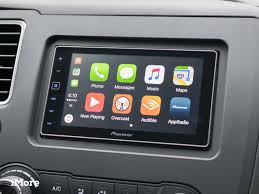Author: Sydney White
The Changing Face of Retail and the Auto Industry
Over the past two decades, retail has undergone a dramatic transformation driven by technology. Digital commerce and social media have reshaped customer behavior and expectations, leading to a 75% decline in visits to shopping malls since 2014. Today, consumers rely on online reviews, tutorials, and influencer marketing to make purchasing decisions—long before they ever step foot in a store.
The COVID-19 lockdown accelerated this digital shift, especially in high-value purchases such as automobiles. The traditional car-buying experience—marked by price haggling and long waits for financing—is rapidly fading. Modern consumers often arrive at dealerships knowing more about the vehicle than the sales staff. Combined with soaring car prices (up nearly 60% since the pandemic), the industry now faces serious instability. Many buyers owe more on their vehicles than they’re worth, leaving dealerships struggling to adapt.

Several U.S. states, including Texas, South Carolina, and Connecticut, still have laws restricting direct-to-consumer (D2C) auto sales, but companies like Tesla have found ways around them. D2C models are now reshaping the market, with automakers like Mercedes-Benz and tech giants like Amazon leading the charge. Amazon recently entered the space through a partnership with Hertz, selling vehicles online without holding inventory—a move that drastically reduces costs.
Industry experts predict the decline of the traditional large-lot dealership. Future “dealerships” may function more like experience centers—offering test drives, small showrooms, and service stations—while most sales happen online. CEO Tom Holgate of iLending foresees the rise of micro-dealerships in local neighborhoods, similar to rental car outlets.

At the same time, generational shifts are redefining the market. Younger consumers no longer view car ownership as a status symbol. Ridesharing, public transit, and urban living have made ownership less necessary—and less appealing. In 2024, vehicle purchases among 18–35-year-olds hit a record low.
To survive, automakers and dealers must embrace digital transformation. Platforms like Shop-Click-Drive (GM), Amazon, and even TikTok and Instagram are introducing tools that let customers browse, customize, and finance vehicles online. In an age where convenience and transparency rule, traditional dealerships may soon follow department stores into history.


